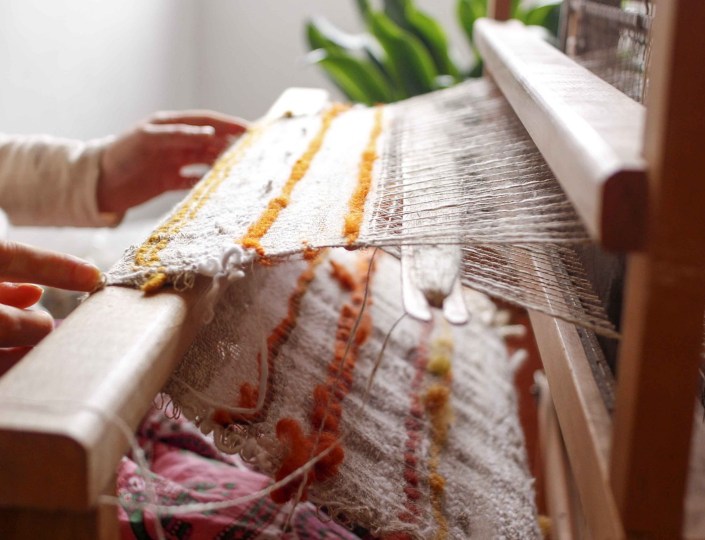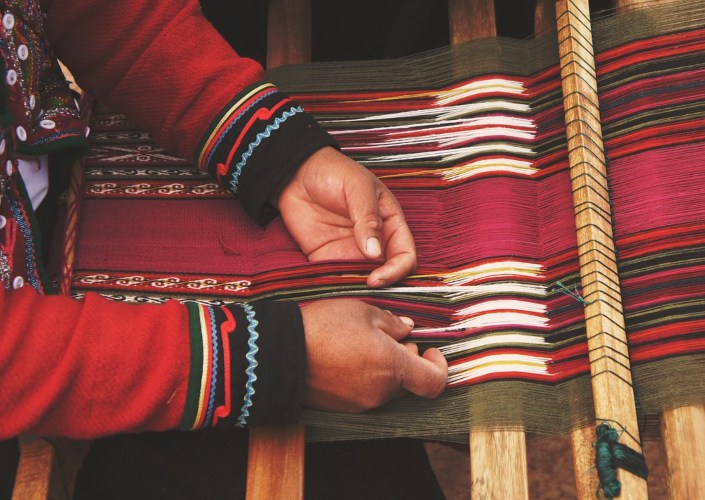Montenegro
The costume has always been an important segment in the life of Montenegrins. Montenegro is a country of exquisite nature, but also of very diverse nature, from the accessible coast to the extremely isolated north. Certain villages even today in Montenegro are not easy to come in contact with, especially contact with the “civilization” is very rare and in the past of Montenegro that was very often the case with the majority of villages. Because of those reasons, people had to cut their own dresses at home and they had to make it from the material which was accessible to them. The materials which were used most often were: wool, goat’s hair, hemp, flax, Spanish broom, and in smaller amounts they produced and used silk.

There were two types of the national costume, widely used until the 20th century: the older one, made of the domestic “sukno” (woollen cloth of rolled sheep’s hair) and the newer type of svita (a type of soft and firm rolled fabric).

Montenegro costume
In Montenegrin culture, there were three types of national costumes: for men, women and formal costumes for special occasions.
Besides national costumes for men and women, there were also clothes typical for the certain areas of Montenegro, from towns of Risan, Kotor, Grbalj, Orahovac, etc.
Until the 19th century, Montenegro national costumes were mostly domestically produced. Women in the countryside made quality traditional clothes for the rural population in villages.
Formal costumes for the special occasions were made by the famous craftsmen from Montenegro called “Terzije” who were responsible for making some of the most beautiful pieces of traditional clothes, today kept in museums as museum exhibits.

The formal national costume
The Montenegro national costume is an elegant cut, made of the finest fabrics, with rich gold embroidery and bold colour combinations. In the past, the formal national attire was usually worn by the wealthy citizens of Montenegro, but later it became commonly used among others, as well.
The most important materials for the Montenegro national costume were wool, goat hair, flax, hemp, and silk. They were used for many elements and became the inevitable parts of formal and traditional Montenegrin attire.
The formal clothing included: authentic cap, usually white shirt, jamadan (the upper clothing), gunj (peasant jacket), jelek (upper clothing), toka (element for belt-tightening), silav (leather girdle for weapons), trambulus (silk belt), dusanka (the upper part, worn over gunj) and dolama (the upper part with sleeves under the armpits).
Besides formal national attire, national costumes were made uniquely for men and women.
Elements for men costume
Montenegrin national costume for men is made of many beautiful, decorative and useful elements, but here are the most important ones every Montenegrin man had to have.
Cap
The Montenegrin famous circular cap was made of “sukno” and “pustina”. It was made in red, with a black brim and gold applique cord embroidery on top. The embroidery included many symbols, but mostly used were historic or national ones.
shirts, coats and other
The white shirt with collar was also an inevitable part of the national costume. It had a slit on the chest, closed with buttons. The shirt was an item of obligatory clothing for a male in Montenegro, usually drawn in the pants.
The so-called “Džamadan” (Jamadan) was domestically made of cloth and cotton, and worn over the shirt. The upper part called “Gunj” was a shirt of a male folk costume and it looked like a long peasant coat. It had copper buttons and was widely worn among the male population of Montenegro.
At one point, Gunj was replaced with “Dolama”, made with sleeves below the armpits. During the summer, they wouldn’t use the sleeves of dolamas, but during the winter they were pulled on the fists. In this way, the folk garment could be adjusted to all seasons.
Ječerma and Jelek
Ječerma is a part of male traditional attire with a flat slit on the chest. There are two buttoned rows on both sides, made of black silk. Hooks and knots are below the buttons and are used for buttoning all the way up to the middle.
Jelek is an upper clothing item, a sleeveless embroidered jacket, made of coarse and decorated with golden embroidery or rope. Jelek was worn over the gunj. Jelek doesn’t have buttons but it opens on the front side.
Pants and belt
The traditional Montenegrin pants were originally white and made of waterproof cloth (čoja) and coarse linen. They were wide in the waist and shrunk below the knees. People usually tied them with socks with a cord so they wouldn’t separate.
Males of Montenegro also wore a woollen or cotton belt, which was 5-6 m long and 15 cm wide. This belt tied the pants very well around the waist.
Knee Socks
Knee socks were made of wool and are probably the most popular parts of Montenegro national costume. They were mostly used to strongly tighten the calves. They had to make them like that because Montenegrin people needed as much safety as possible, moving around the stony parts of the country.
Traditional shoes “Opanci”
The important part of Montenegro national costume were “opanci” – the authentic peasant shoes made of leather with various ending parts on toes. They are a famous national symbol for many people in the Balkans.
Elements for women costume
Women of Montenegro are widely known for their elegance and beauty. There were formal and everyday costumes and their main difference was that the formal costumes were made of more elegant materials and decorated more lavishly.
There were two different types of female national attire, such as traditional (attire for different occasions) and citizen costumes.
Montenegro traditional costume
Jecerma, Kamizola and Zubun
The “Jecerma” was a kind of a short vest made of coarse fabric or velvet. It had buttons (some dindn’t) and it went down to the women’s waist.
On the other hand, Kamizola was a vest worn over the shirt, made of silk and damask. It was usually worn by women of the higher classes. Zubun was made of coarse fabric and velvet, in various lengths. They were sleeveless and buttoned.
Dolama and Bran
Dolama was an upper dress made of coarse fabric with golden buttons or golden ropes. It was usually worn on festive occasions.
Bran was a female dress worn over the shirt, made of upper part “Stan” which was tight and close to the body, while the lower part of the skirt went all the way to the feet and was made of 5 folds.
Skirt and Rasa
Everyday skirts were made of hemp and flax, while formal skirts had golden embroidery and were made of damask and silk. Usually, the material of a woman’s skirt represented her social status. The skirts were buttoned with buttons and “ambreta”, which had a useful and decorative function.
Rasa was clothing made of different kinds of wool and was worn over the white shirt. Rasa usually meant that a woman came from the upper class. It was made of silk and other materials.
The apron
One of the most important elements of Montenegro national costume for women was the apron. It was made of “indijana” and “tela” materials, usually intended for everyday use. There were also aprons made of silk with golden embroideries, for festive occasions.
Cemer and Zenski trak
Cemer was a heavy belt, decorated with various dark red or green stones and silver filigrees. It was the most important part of Montenegro traditional costume for women. Below the belt, there was another one called “Zenski trak” made of coarse fabric, for the purposes of protecting women from the pressure of the Cemer.
Knee socks and Bjecve socks
Knee socks were used to tightly surround the calves. It was important for women to tighten the socks well for the safety of their feet.
Famous socks for women called “Bjecve” were made of wool. The upper part of the socks was red and black, while the rims of the socks were hemmed with dark blue or red colour.
Footwear
Opanci, the peasant shoes, were very popular among the women of Montenegro. Opanci are made of the beef’s skin with edged fronts and tough peaks. Besides opanci, women also wore “nanule” and pasamage (kinds of slippers).
Female civil costume
Besides Montenegro traditional costume, Montenegrin women also had a civil costume. They were made of expensive materials.

Shirt and vest
Shirts were usually made of cotton, silk, and flaxseed, which were considered expensive materials. Traditional ones were decorated with lace and embroidery. Usually made of brocade, a vest was made to be pressed against the body in order for it to accent the female bust.
Skirt and dress
The skirt was made of a heavy fabric called “kaliman”, damask, velvet and many others. They were made in red, blue, green, white and black. Sometimes they were made of the same materials as the upper parts.
The dress was simply cut and had a pretty raised waist. It was worn during the whole year and made of different materials in various colours.
Belt and apron
The Belt was made of silk and represented a very important element of female civil clothing. It went around the waist and was decorated with embroidery, beautifully applied on the belt.
Made of silk, flax or muslin, the apron was also a very popular element of clothing among the women of Montenegro. It was tied on the waist and usually worn over a skirt, or a dress.
Kaftan and karpeta
Kaftan was made of heavy cloth and damask and was a kind of a long upper dress for women of higher social classes. It was one of the most used elements of the national costume of Montenegro.
Montenegro national costume for women also included the karpeta – a sleeveless dress made of silk, wool and other materials, in many different colours.
Socks and shoes
Citizen footwear was called “crevlje”, and they were very popular in Montenegro. Besides crevlje, Montenegrin women also wore “mule” slippers, made of leather, wool cotton and worn inside the house. Socks for women were usually made in green, black and white colour painted cotton or wool.
Jewellery and decorative items

Montenegrin women were true fans of beautiful jewellery such as hairpins, earrings, medallions, broches, belts, buttons, rings, gloves, needles, buckles, rosaries, etc.
In the Old Montenegro, jewellery was usually made, bought and given to close people. That routine remained even today in some areas of the country because jewellery meant a present of the highest value.
References:
https://www.visit-montenegro.com/montenegro/montenegro-customs-and-tradition/
https://portomontenegro.com/blog/montenegronationalcostume

